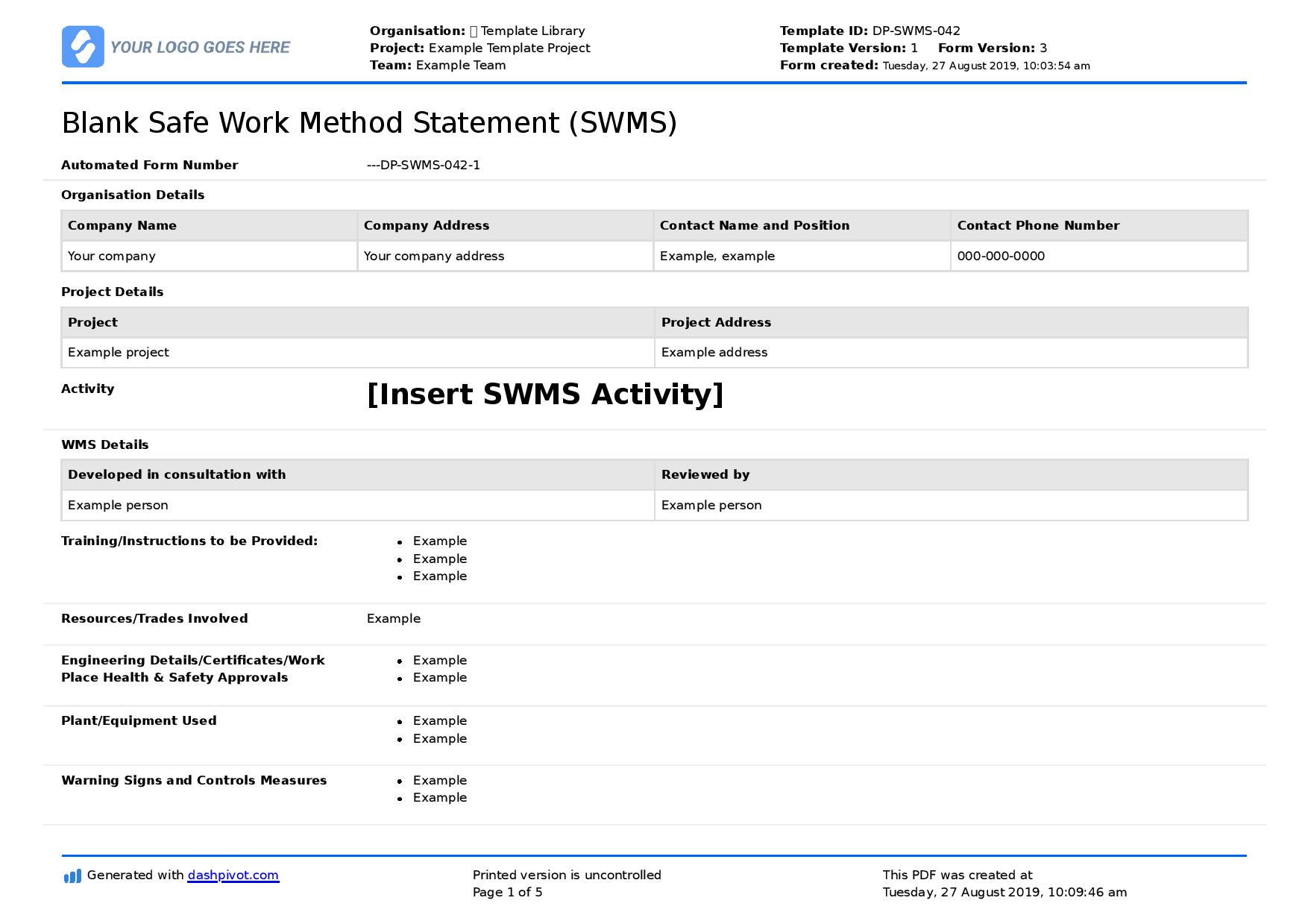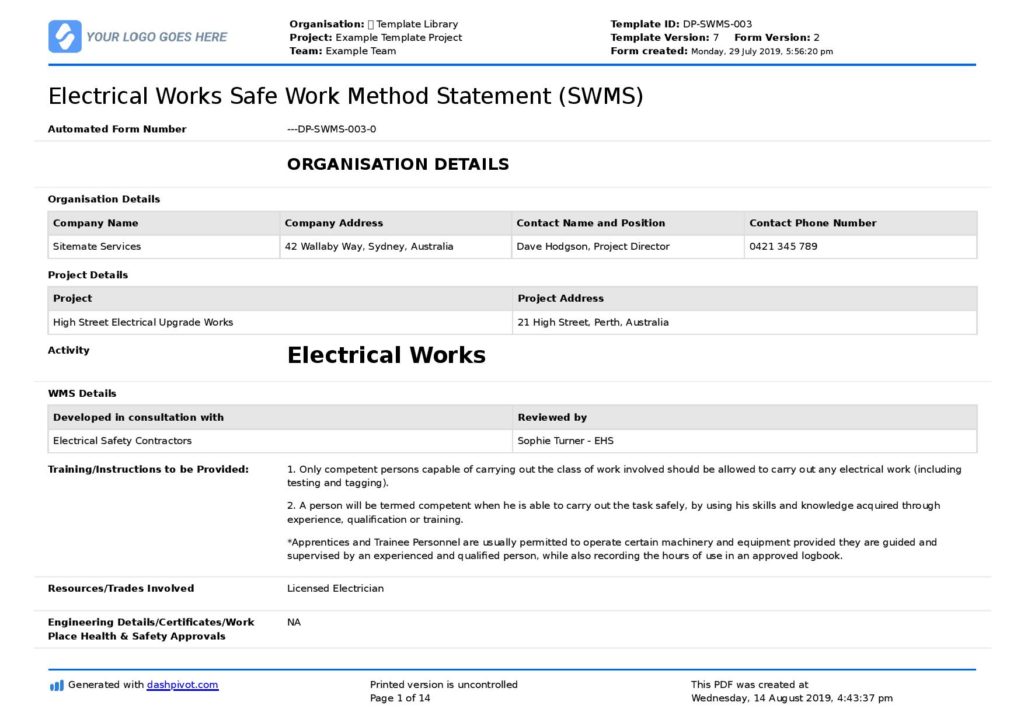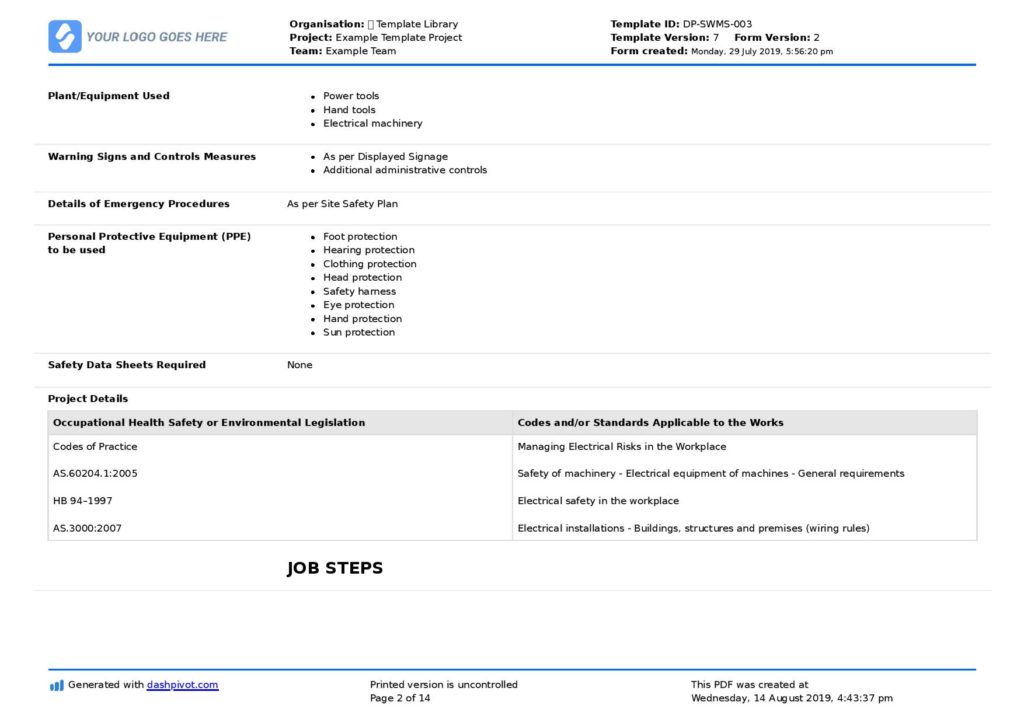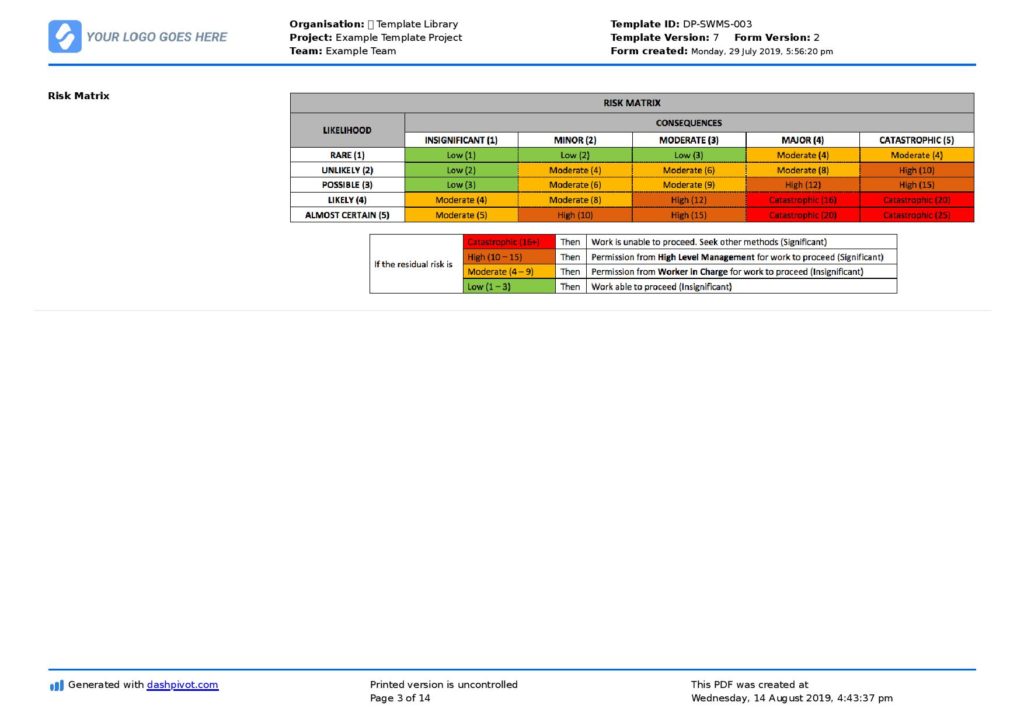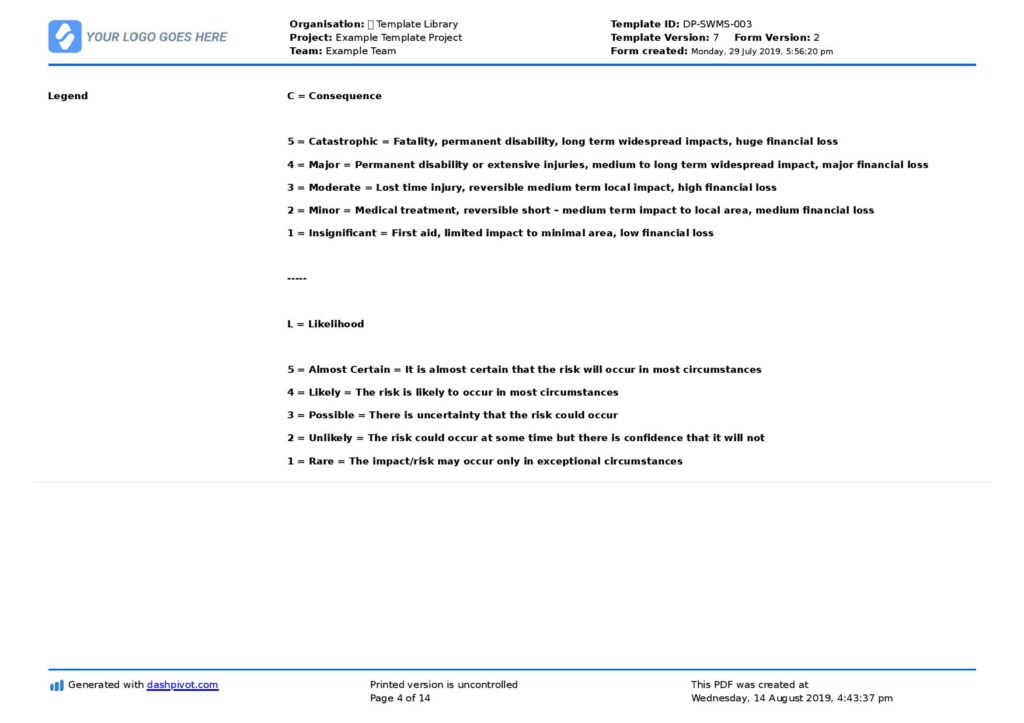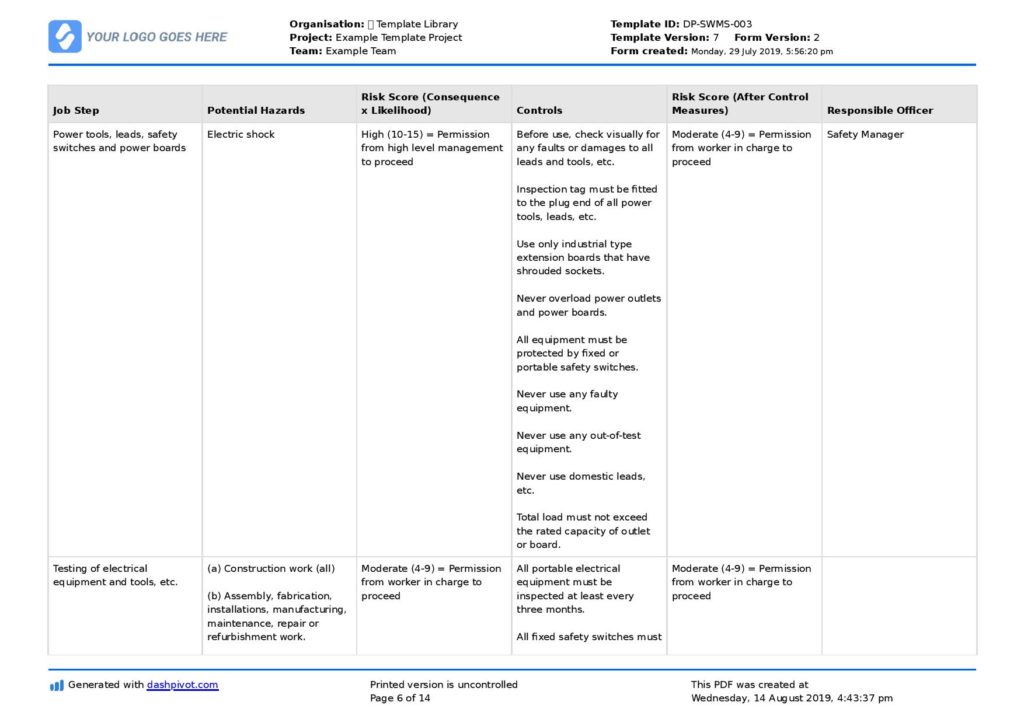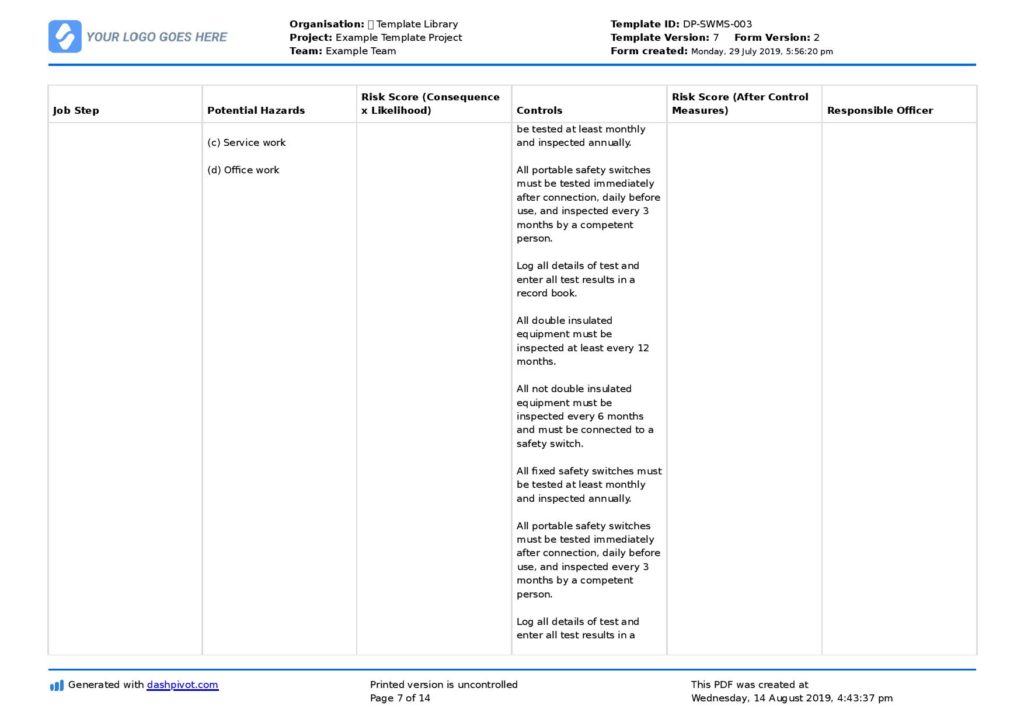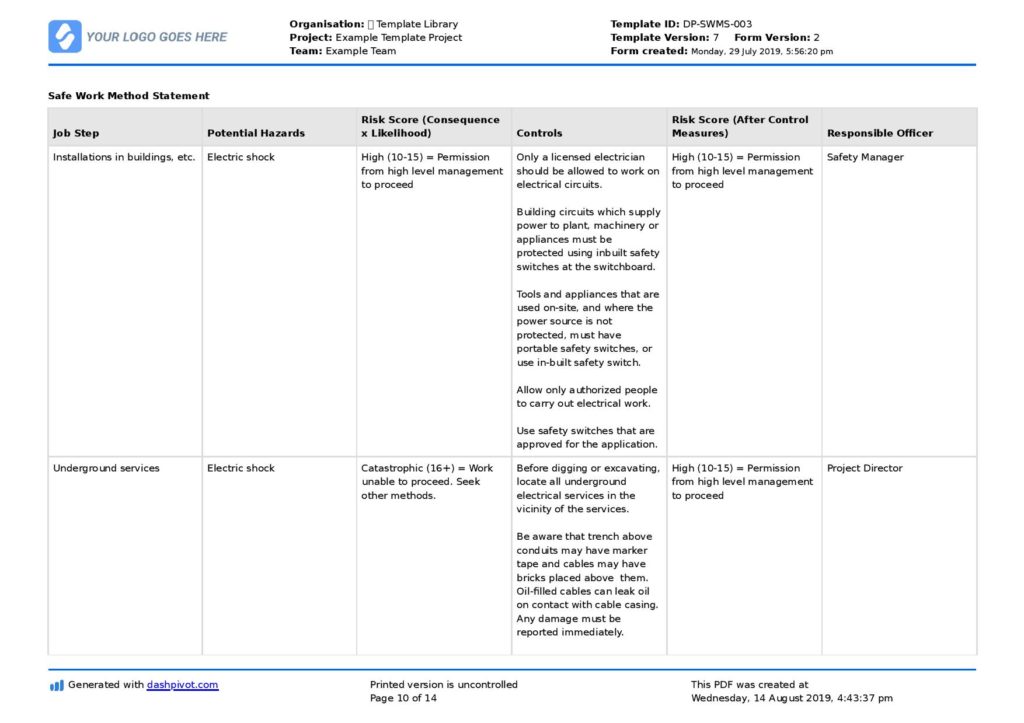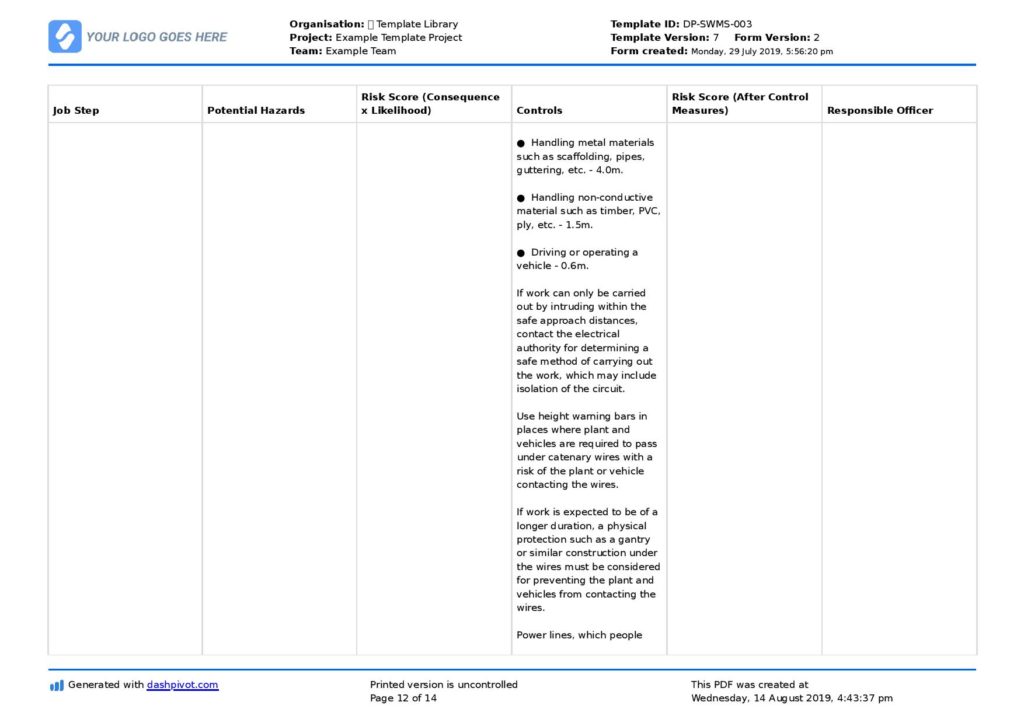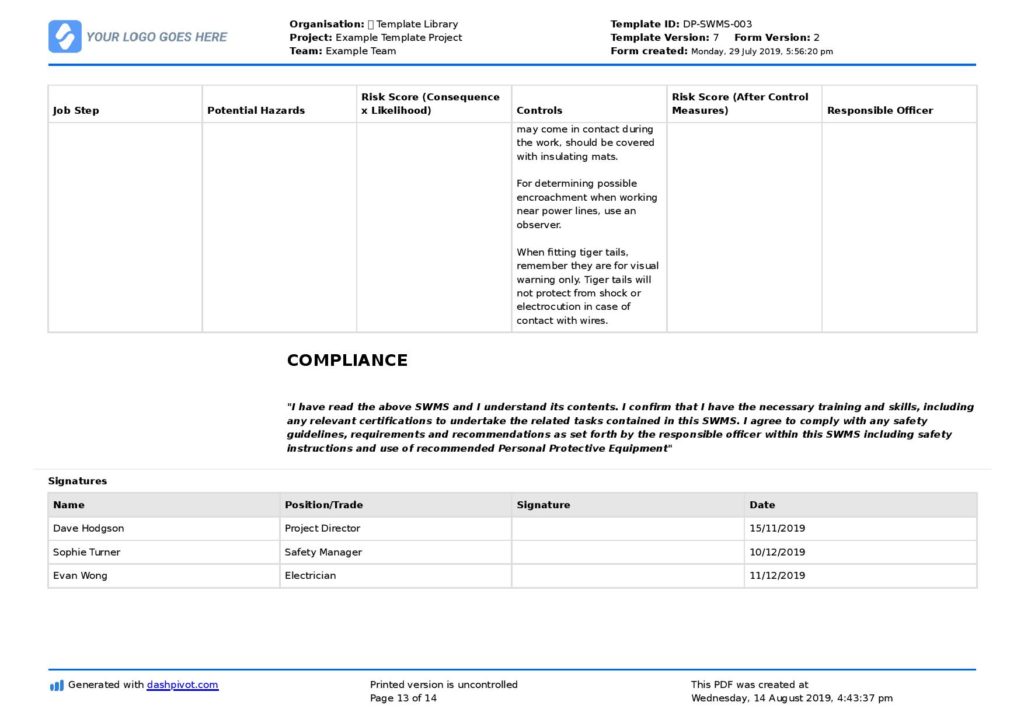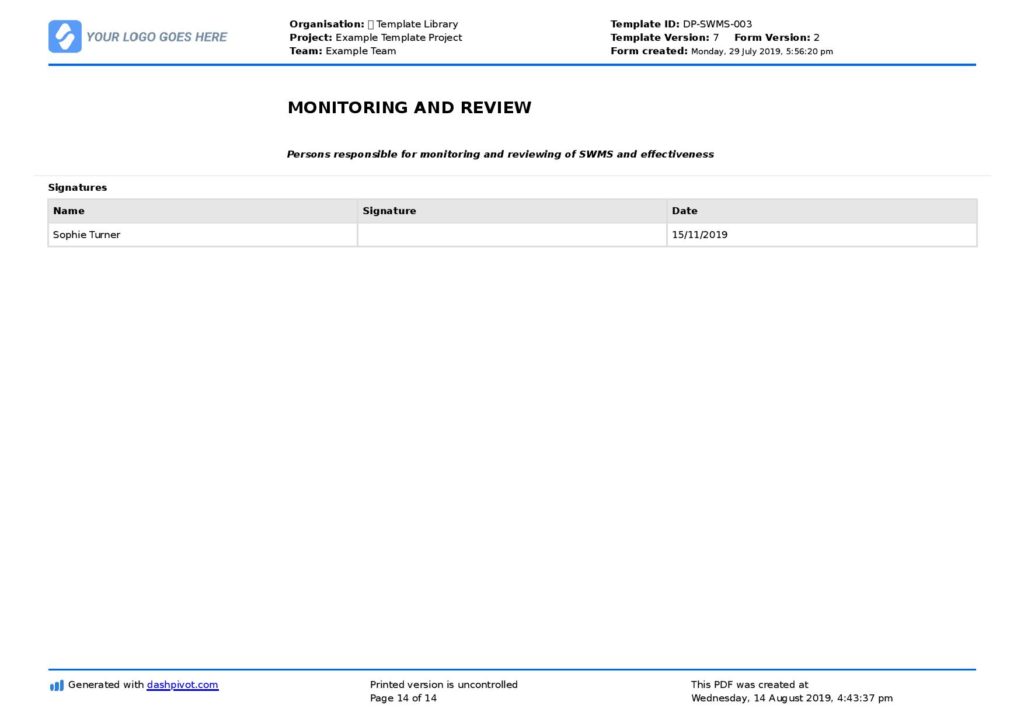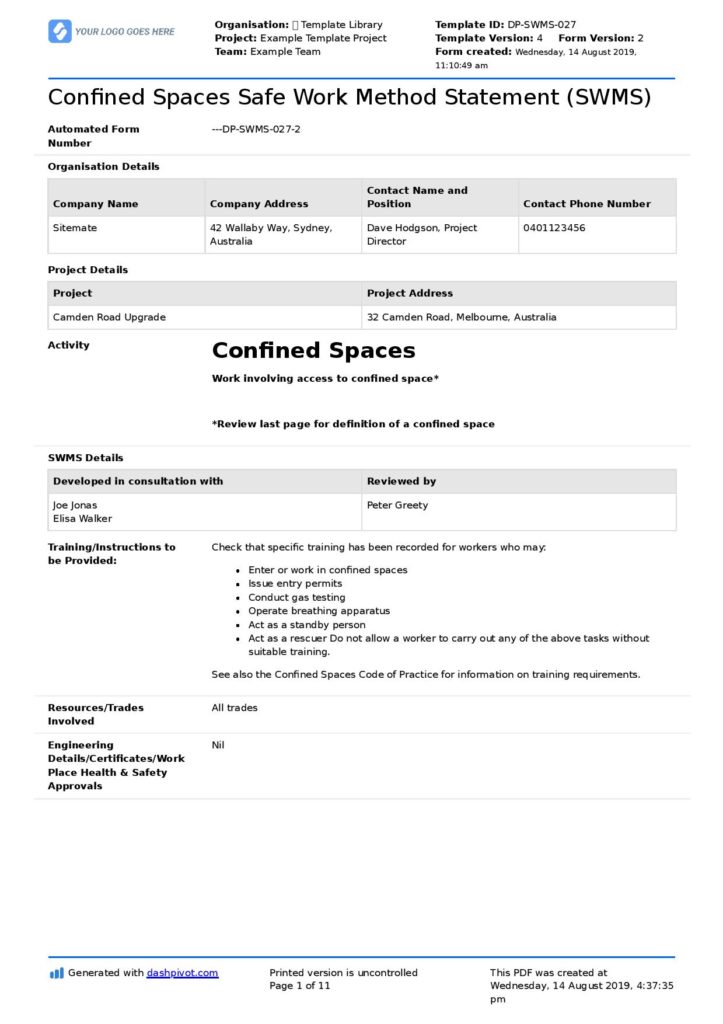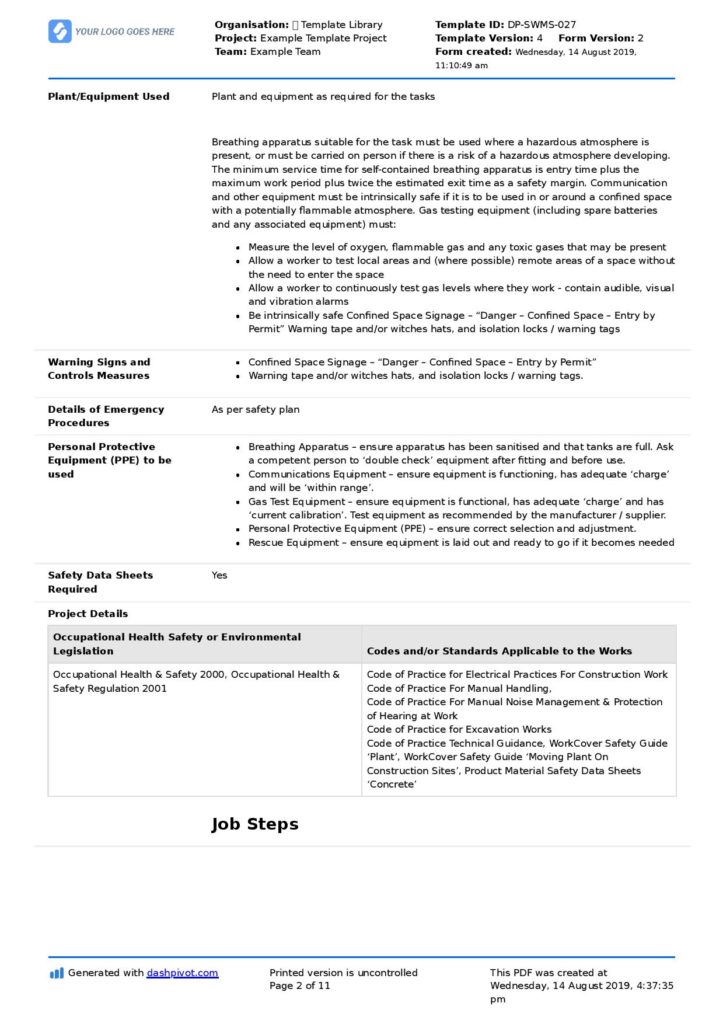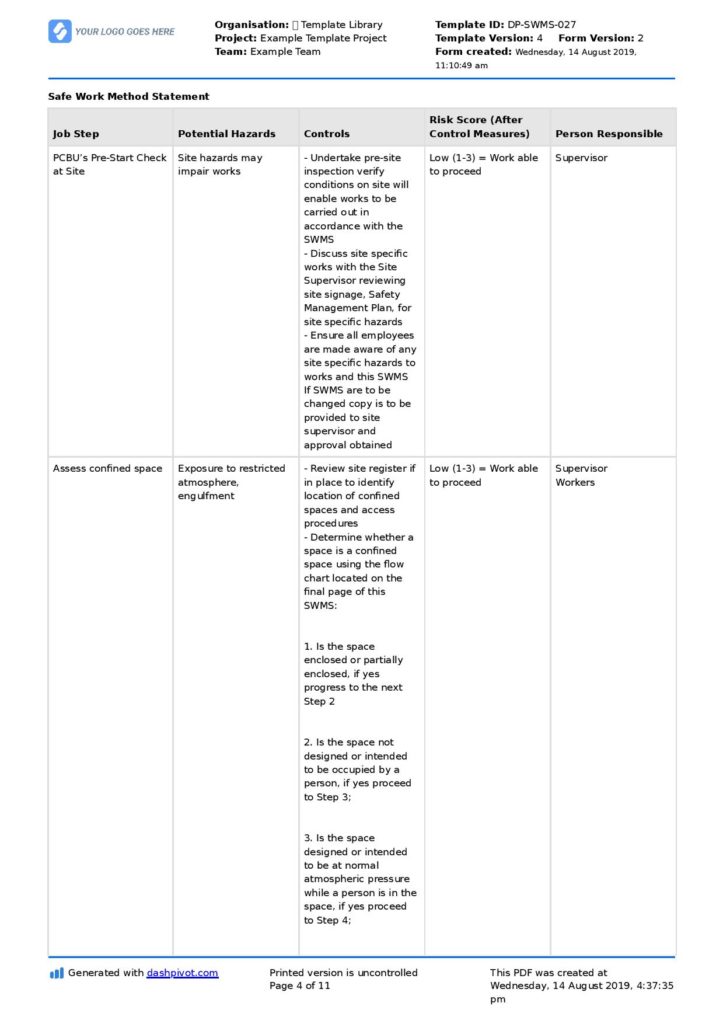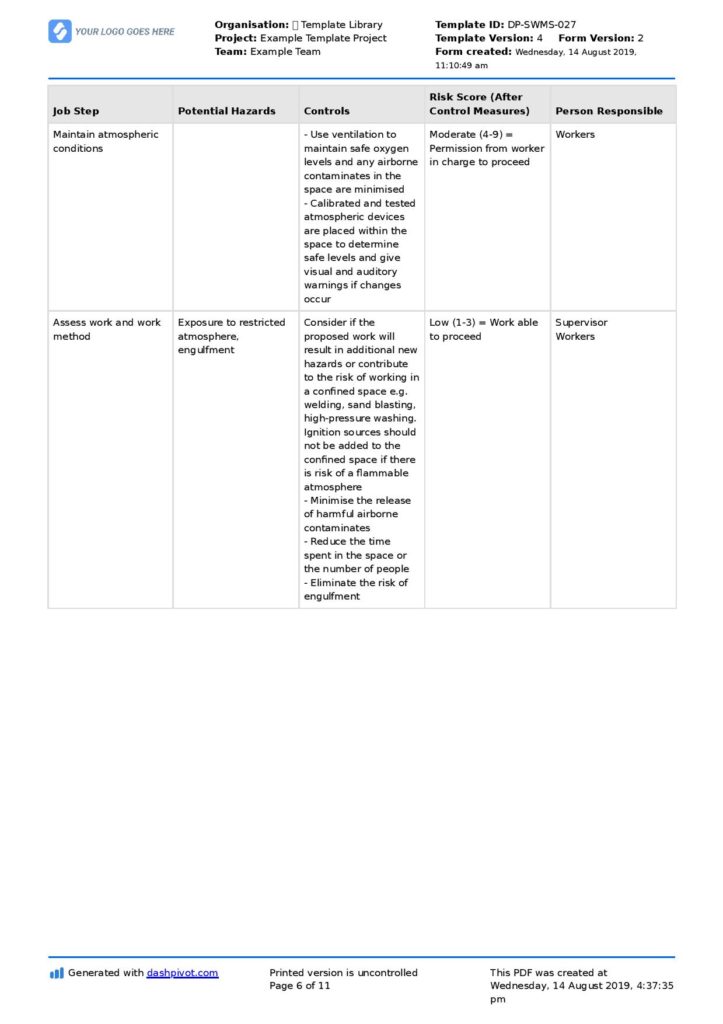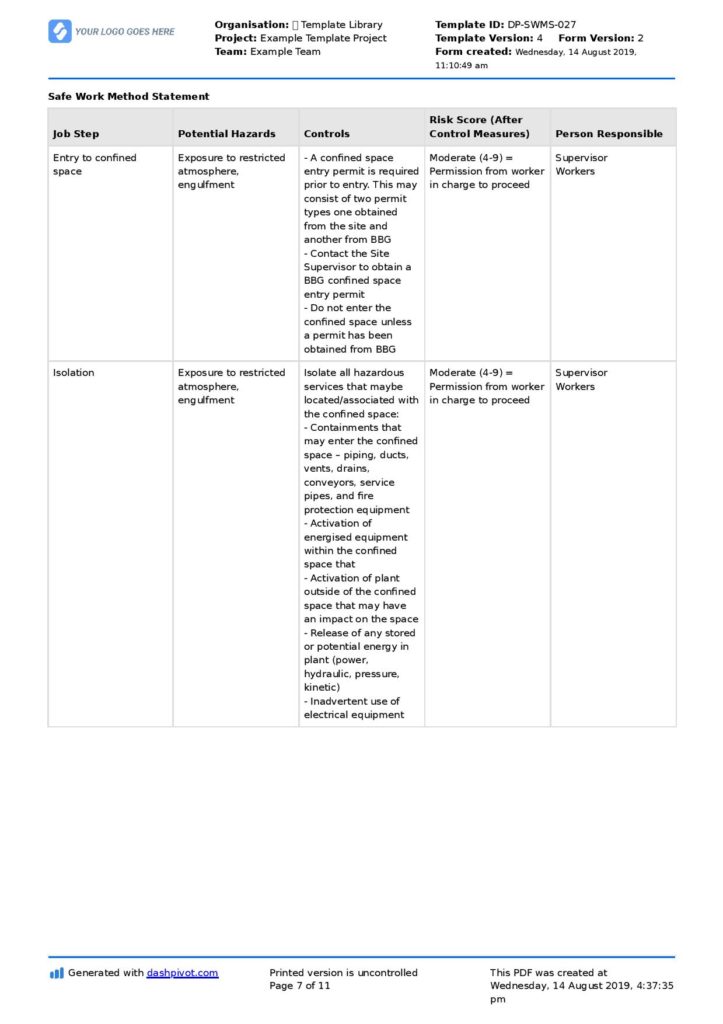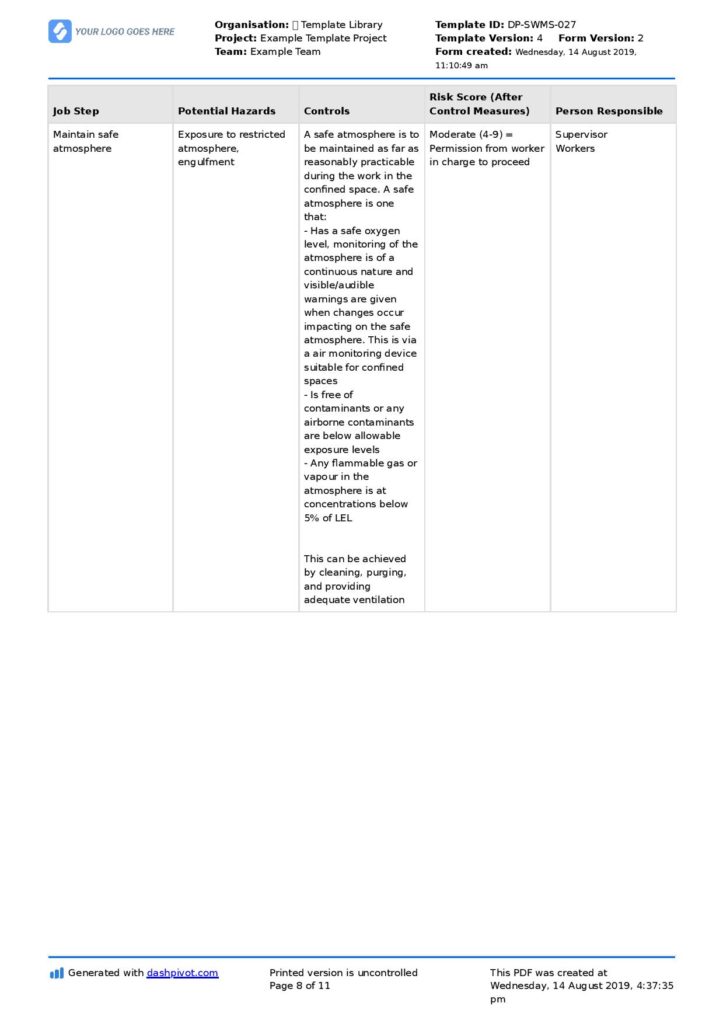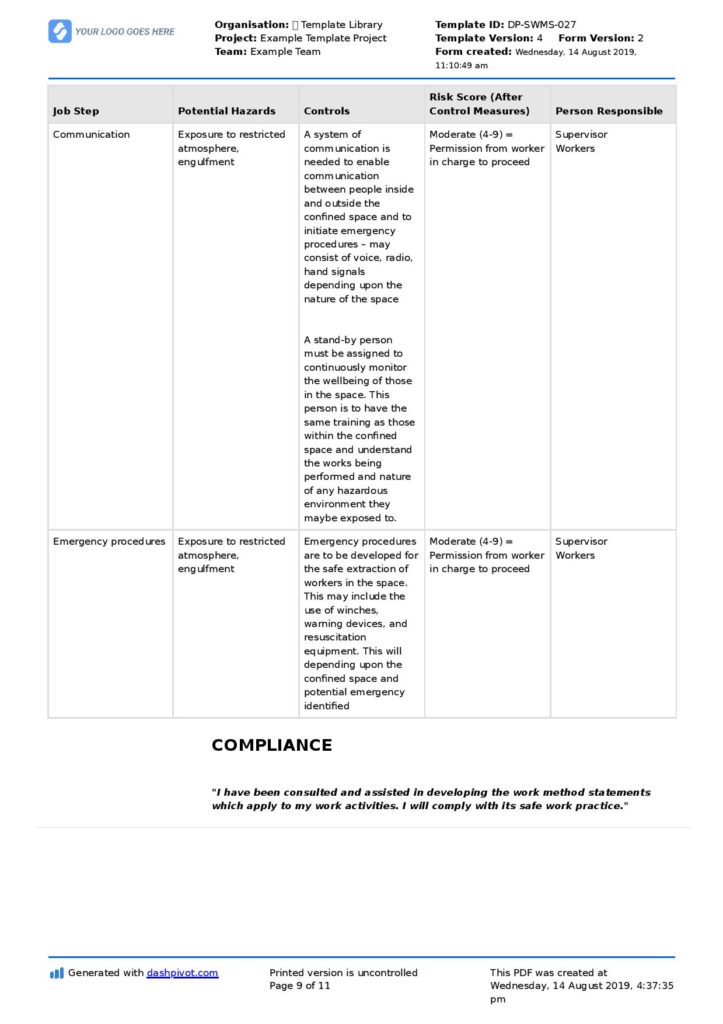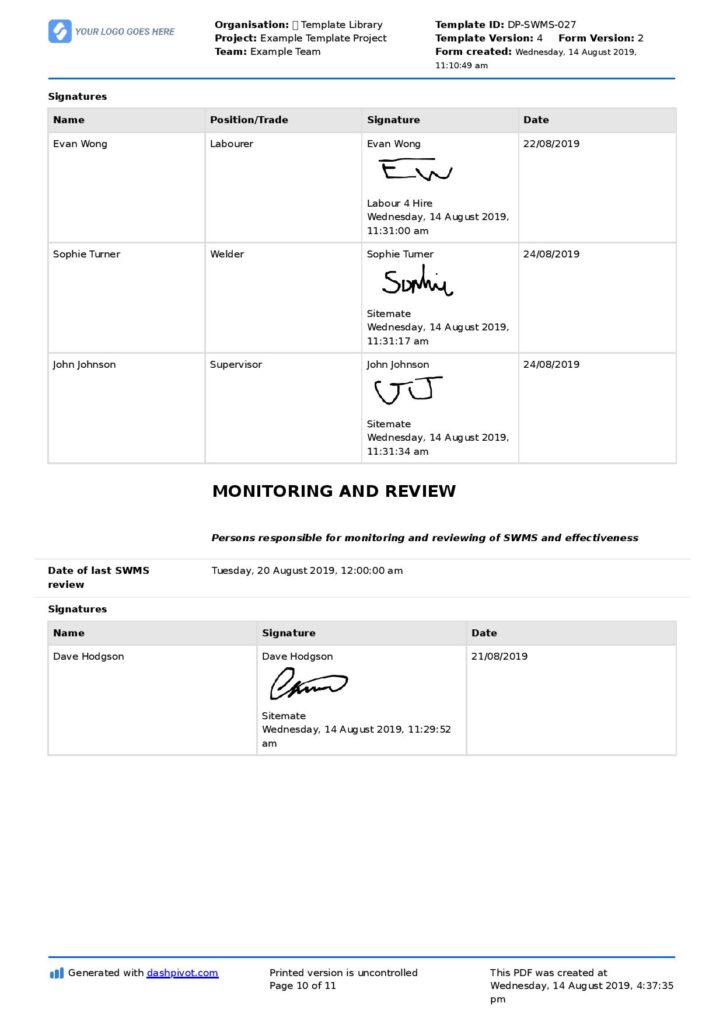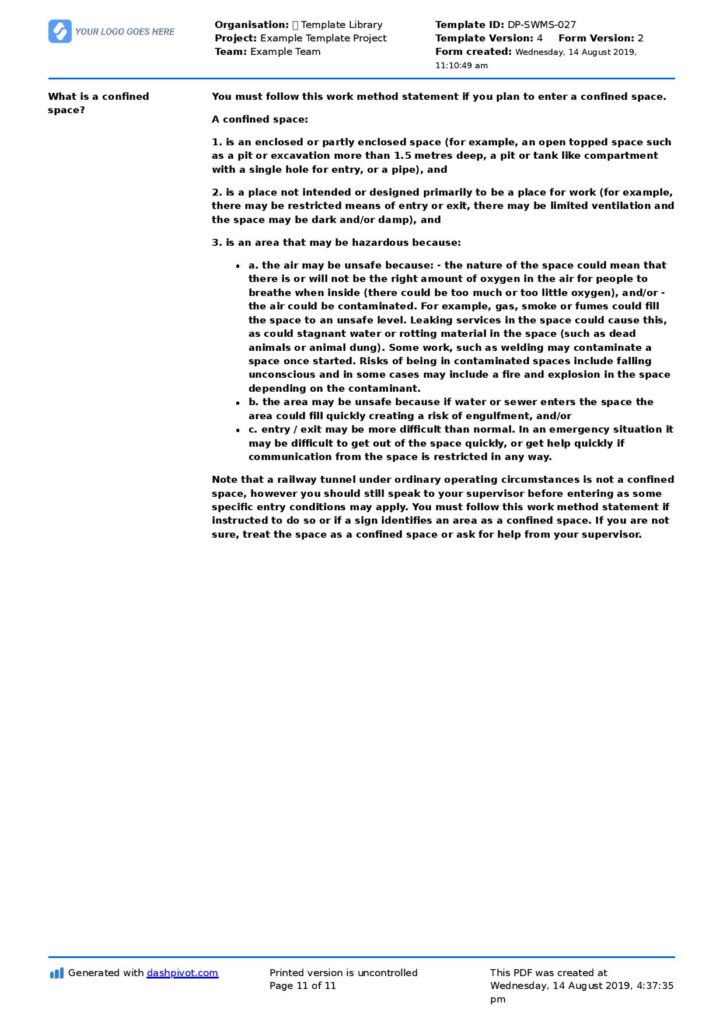Example safe work method statement
Example Safe Work Method Statement (SWMS) - Use or copy these examples
In this article, you'll see a number of Safe Work Method Statement examples (SWMS) which you can use as you see fit to create, manage and stay SWMS compliant moving forward.
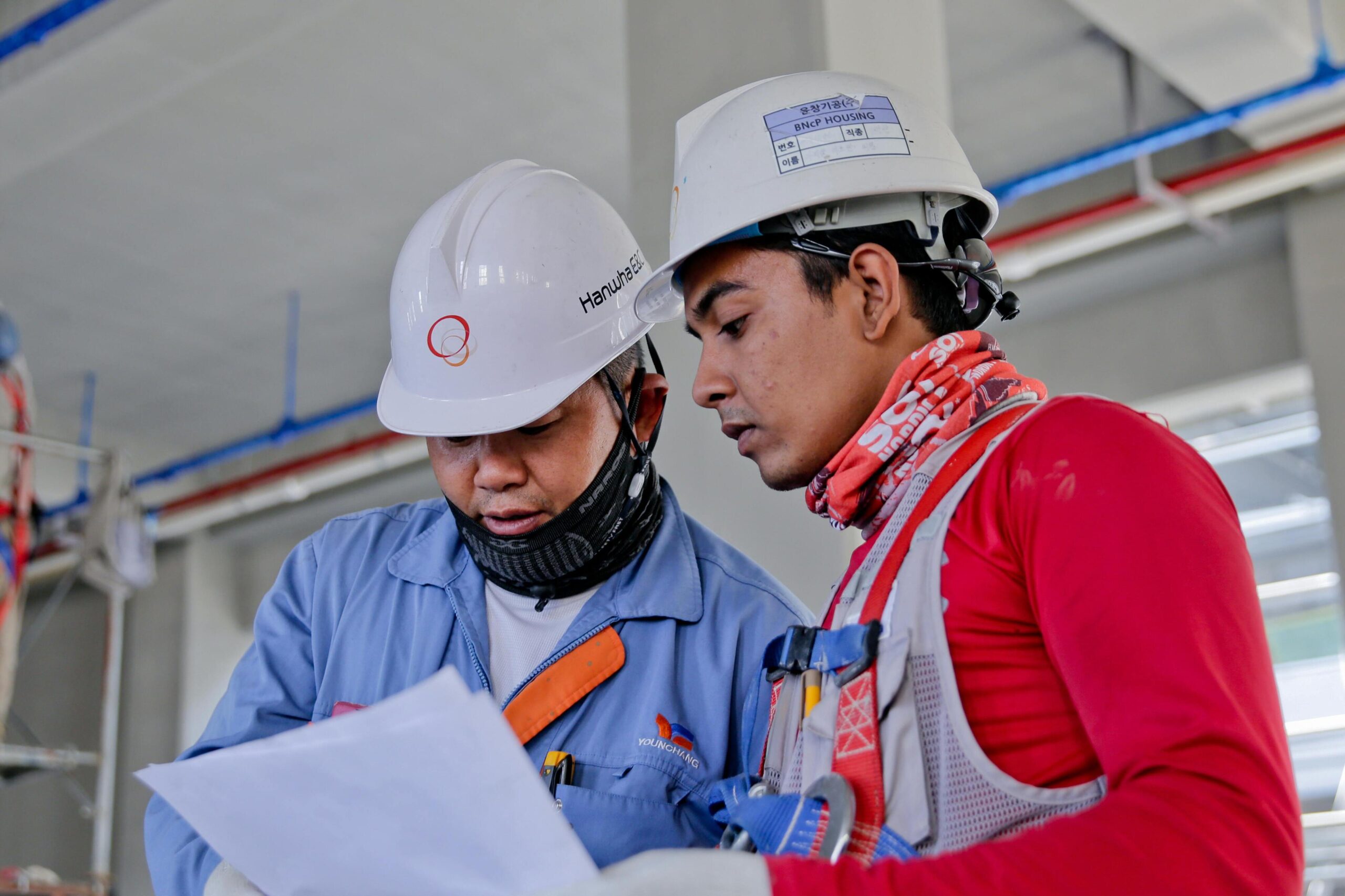
Is there one true example of a safe work method statement?
When thinking about creating a new SWMS or updating our old one, one of our first thoughts is whether or not we have the right formatting, framework and all of the necessary ingredients included in our current safe work method.
One of the best ways to get a good idea of whether we are on the right track is to look at an example safe work method statement which we know is used, and which we know we can trust.
The truth about all examples is that an example is exactly that - it's an example. While there are universal truth to many documents and other things which can be represented in an example, there is also a lot of nuance in almost everything, and most things in life need to be applied to the current situation and context.
While there are some universally applicable sections of a good safe work method statement - which we will dive into in the SWMS example below - there is also some room for interpretation and relevance on your part.
One of the most important aspects of a safe work method statement is that it is project or site specific. This way, workers, supervisors and managers have thought about how they can optimise their approach to this specific high risk activity in these exact circumstances.
Most safe work method statements do look similar, and many of the activities construction companies engage in and conduct do share many hazards, risks and control measures.
But your safe work method statement shouldn't be an exact replica of an example of a safe work method statement. It should be a safe work method statement which was produced and is maintained specifically for your sites, your projects and your workers.
In saying all of this, example safe work method statements are really helpful in providing you with good ideas and a really healthy head start on your way to better and more compliant safe work method statements.
So let's dive into the example safe work method statement now.
An example safe work method statement
The first example safe work method statement we will look at is an electrical works SWMS.
It's important when looking at SWMS examples that we don't get too bogged down in the details of the activity specifics - unless we are looking for an electrical works SWMS specifically.
The key sections of this example safe work method statement include:
Organisational and project details - Safe work method statements are formal documents which need to be properly labelled. All example safe work method statements you see should come stamped with the details of the organisation, as well as the details of the project, so that anyone referencing or investigating the SWMS knows where it originated, who was responsible, and which project it was intended for.
Other SWMS details - A safe work method statement is rarely a one man job, it usually involves the inputs of multiple people, including proper consultations and reviews. A good SWMS will outline who worked on and participated in moving this SWMS to project delivery.
Training and instructions to be provided - Most high risk construction activities shouldn't be conducted by people with zero training and zero experience, and every activity is a little different. Defining the training and instructions required to even engage with this activity is a great way to reduce avoidable mistakes and issues - as well as to protect people who aren't adequately equipped to conduct the activity.
Resources and trades involved - Similar to the above, this section of the example safe work method statement is intended to constrain the types of people participating in this activity. Not all workers will engage with all activities, and many SWMS are designed specifically for certain trades.
Plant and equipment used - One of the easiest ways to turn a safe activity into a dangerous one is by using the wrong plant and equipment. Your SWMS should bulletpoint or list the plant and equipment which should be used to perform this activity.
Details of emergency procedures - Most SWMS reference the safety plan in this section of the example, but it's a critical part of any SWMS because there may be site or activity specific emergency requirements.
PPE - PPE is an important component of managing safety for high risk activities, and a safe work method statement should always identify the PPE required for performing this activity.
Applicable legislation and codes - As we mentioned, safe work method statements are formal documents, and they can be some of the first documents reviewed by auditors and inspectors. Your SWMS should identify the applicable codes and legislations for this activity, so that it's clear you understand the legal obligations and rules, and have referenced them in producing the SWMS.
Risk score legend - Many workers and managers don't memorise basic hazard and risk scoring, which be crucial in the next section of the example safe work method statement. Including a 'legend' for SWMS creators and viewers gives them more context as to what the scores actually mean in the real world.
Job steps - The job step section of a safe work method statement is the most important and extensive section of a SWMS. As you can see in this example SWMS, this sections purpose is to outline all of the normal steps involved with doing the job - in this example electrical works - and then to document the hazards associated with activity as well as the control measures in place to minimise the risks. Each job step will then get a risk score (sometimes prior to the control measures AND post control-measures) so that the person and company can decide whether work should move forward, who should be responsible for clearing work to continue, and so they can prioritise which job steps require the most stringent safety measures.
Monitoring and review - Safe work method statements aren't created to sit in a folder, they are created to communicate safe work practices and the right approach to high risk activities. Every SWMS should be shared and acknowledged by workers engaging in the task, and reviewed regularly based on outcomes and new insights.
You can view all of these sections and the example content of each by clicking and expanding the example below. You can cycle through the multiple pages of the SWMS and get a good feel for the layout and contents of a typical safe work method statement.
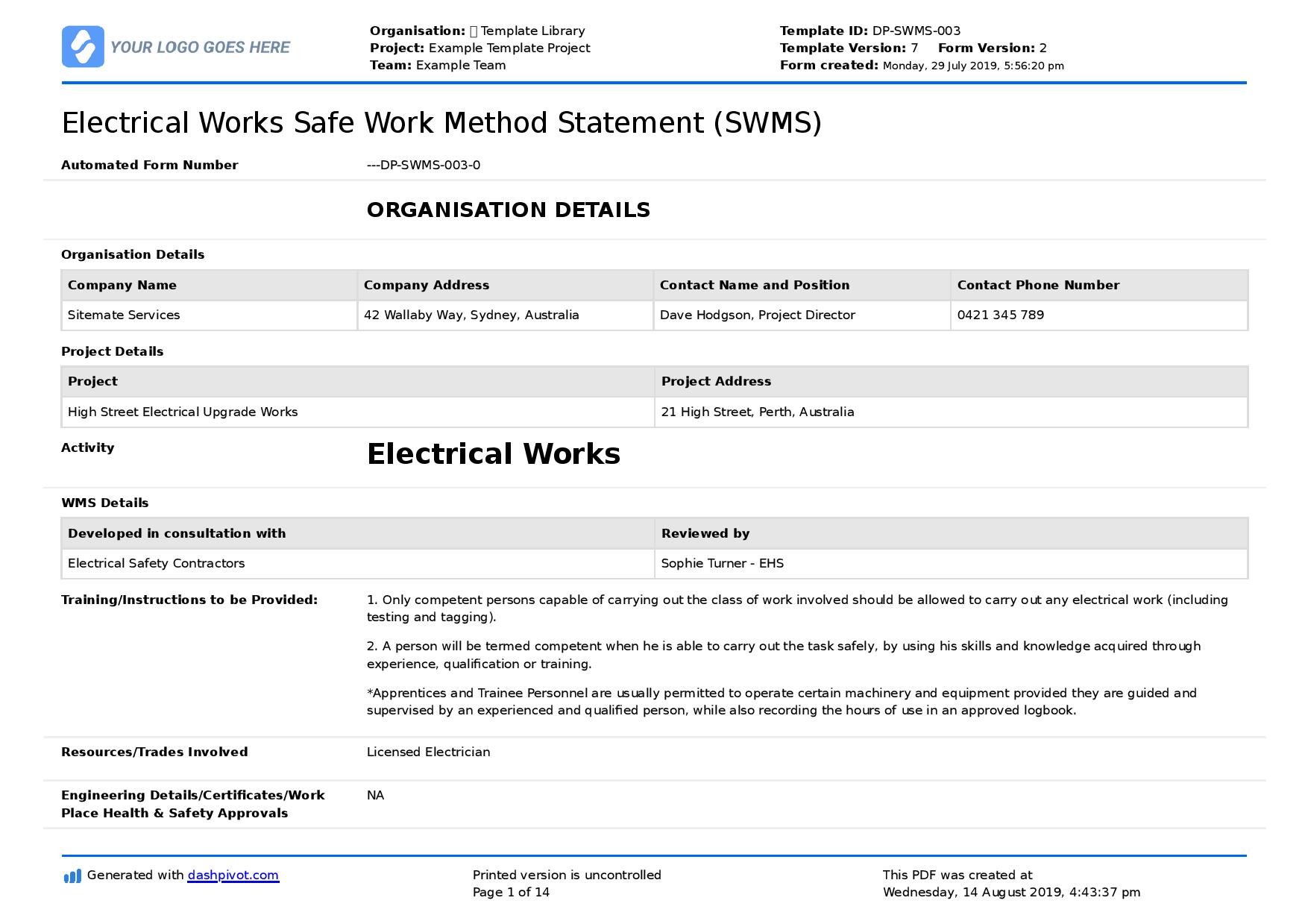
See the free library of safe work method statement templates.
Another example of a safe work method statement
Once you have a good and reliable safe work method statement framework, you will likely use it for all of your SWMS documents.
The above safe work method statement example is a good and re-usable framework for other construction activities, and that can be seen from the second example SWMS below.
The major difference between the two SWMS is that this example safe work method statement only includes one risk score, which is determined after the control measures have been hypothesised.
The other two obvious differences are that (1) this SWMS was created for confined spaces, which is another common SWMS, and (2) the orientation is different - this one being portrait orientation - because Dashpivot automatically changes the orientation of the SWMS document based on the number of columns in the tables.
Many SWMS examples you see will be in landscape view because of the nature of the tables, and you have the freedom to choose which style you prefer.
You can click and expand this example safe work method statement below, to see the specific contents of this SWMS.
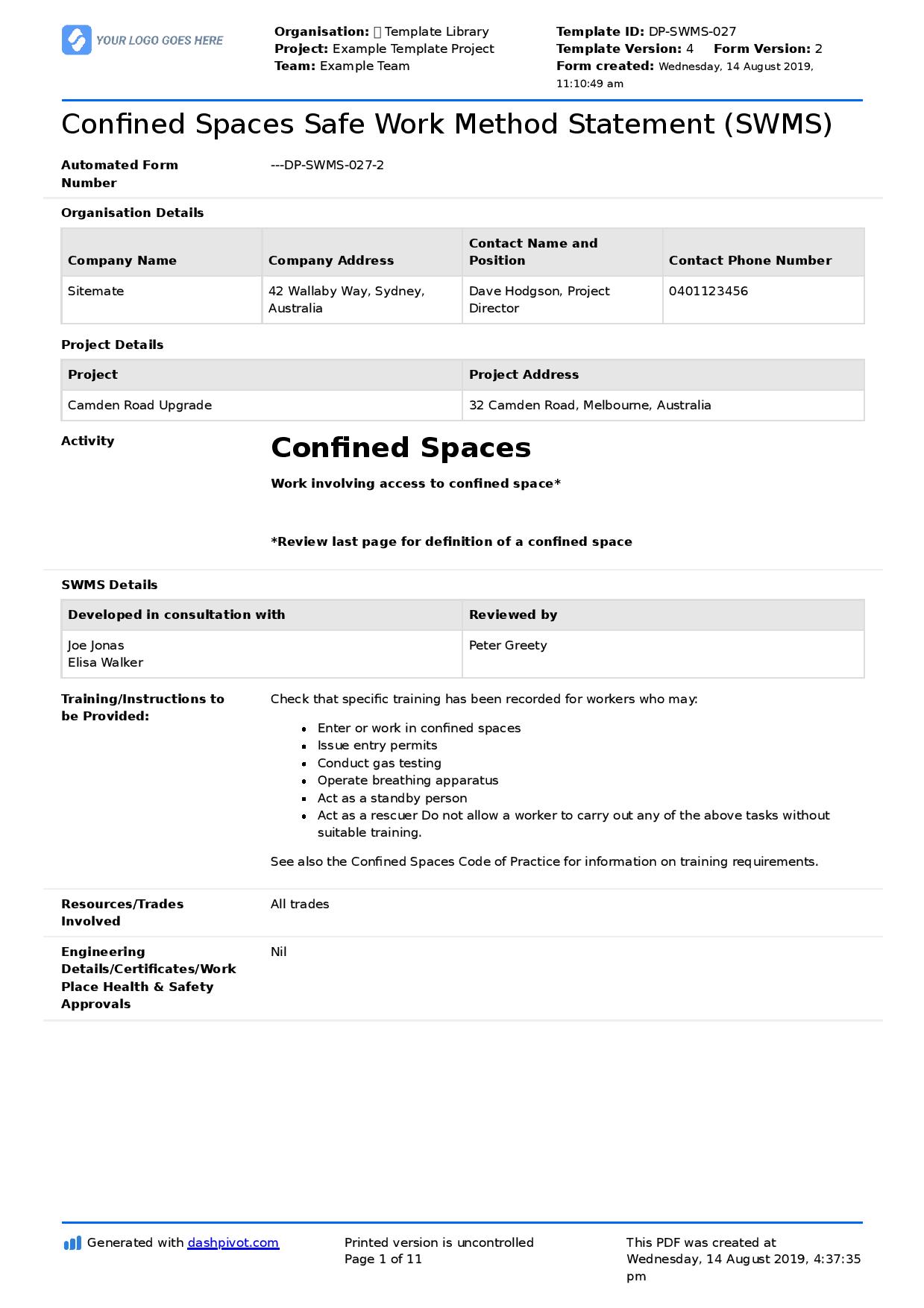
The importance of good safety documentation
Safety is always the first priority on construction and industrial sites. Safety issues and incidents to workers are unacceptable in today's work environment, and companies and projects also have a major incentive to reduce safety incidents beyond worker safety - increased and stable productivity and less delays and delivery issues.
While safety can sometimes feel like a bit of a black box in construction, and while it certainly does require a lot of work, one of the most important parts of safety management is safety documentation.
Site safety is hard enough when everything is properly documented and managed, and it becomes almost impossible when your safety documents and processes aren't standardised, accessible and understood.
Hopefully this example safe work method statement can provide you with a strong framework for your SWMS - which are some of the most important safety documents on every construction site.
You can bolster your safety documentation by getting started with some smart safe work method statement templates here.
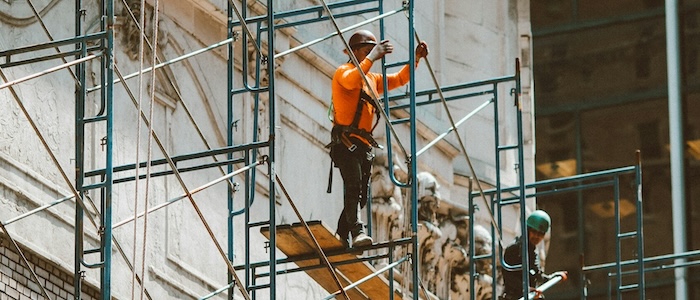
Blank SWMS form
Use this generic SWMS framework to make it suited to your own activities
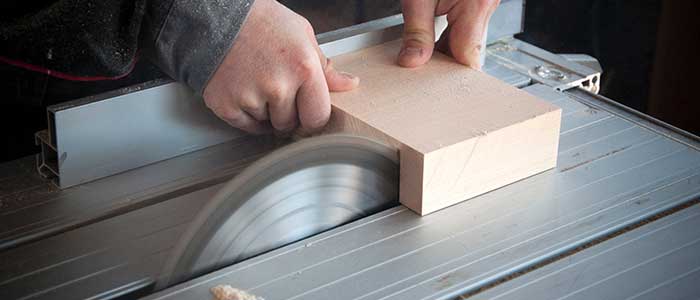
SWMS for Carpentry
Use this SWMS for high risk carpentry activities
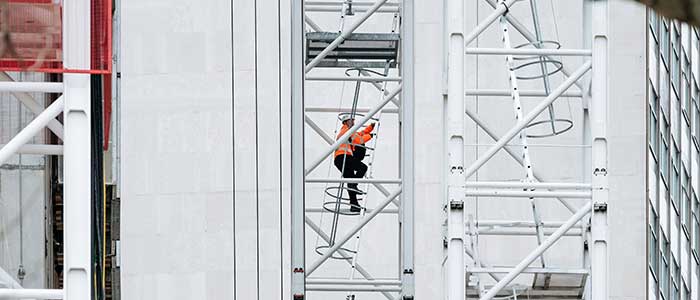
SWMS for Working at Heights
Use this SWMS for working at height risks
